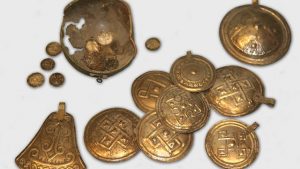This is a cross-posting of a Press Release from the American Society for Microbiology. A team of Swiss chemists and microbiologists have shown that a species of anaerobic bacterium can inhibit corrosion on archeological artifacts made of iron. The research is published March 10 in Applied and Environmental Microbiology, a journal of the American Society …
New papers about microbes in houses, food, and waste or polluted sites. Microbes in the house Environmental Contamination in Households of Patients with Recurrent Clostridium difficile Infection – Megan K. Shaughnessy – Applied and Environmental Microbiology ($$) Households of R-CDI subjects in the peri-FMT period, and of geographically and age-matched controls, were analyzed for …
Happy Valentine’s Day! Here is a new post expressing my love for everything microbial and built. Based on real science and yes, there is chocolate. The great indoors Indoor microbial communities: Influence on asthma severity in atopic and nonatopic children – Karen C. Dannemiller – The Journal of Allergy and Clinical Immunology ($$) We sought …
Happy Holidays! As I already noted on my MicrobiomeDigest blog, the stream of scientific papers does not seem to take a holiday break, so I will keep on posting new papers here. Clean sweep Potential association of vacuum cleaning frequency with an altered gut microbiota in pregnant women and their 2-year-old children — Ekaterina Avershina …
A recent study form Ling et al explored microbial community succession on concrete. They examined the concrete in two sewage manholes over a year using 16S rRNA sequencing. Concrete is a huge part of urban environments, and corrosive microbes eat it away. This causes structural damage, which is especially unwanted in sewage systems. The abstract for the …
A great new mini review (“The dual role of microbes in corrosion,” Nardy Kip and Johannes A van Vee) discussing the dual role of microbes in corrosion and corrosion inhibition has recently been published in the ISME Journal. Though not OpenAccess, because the article is so relevant to the built environment community, I wanted to …
